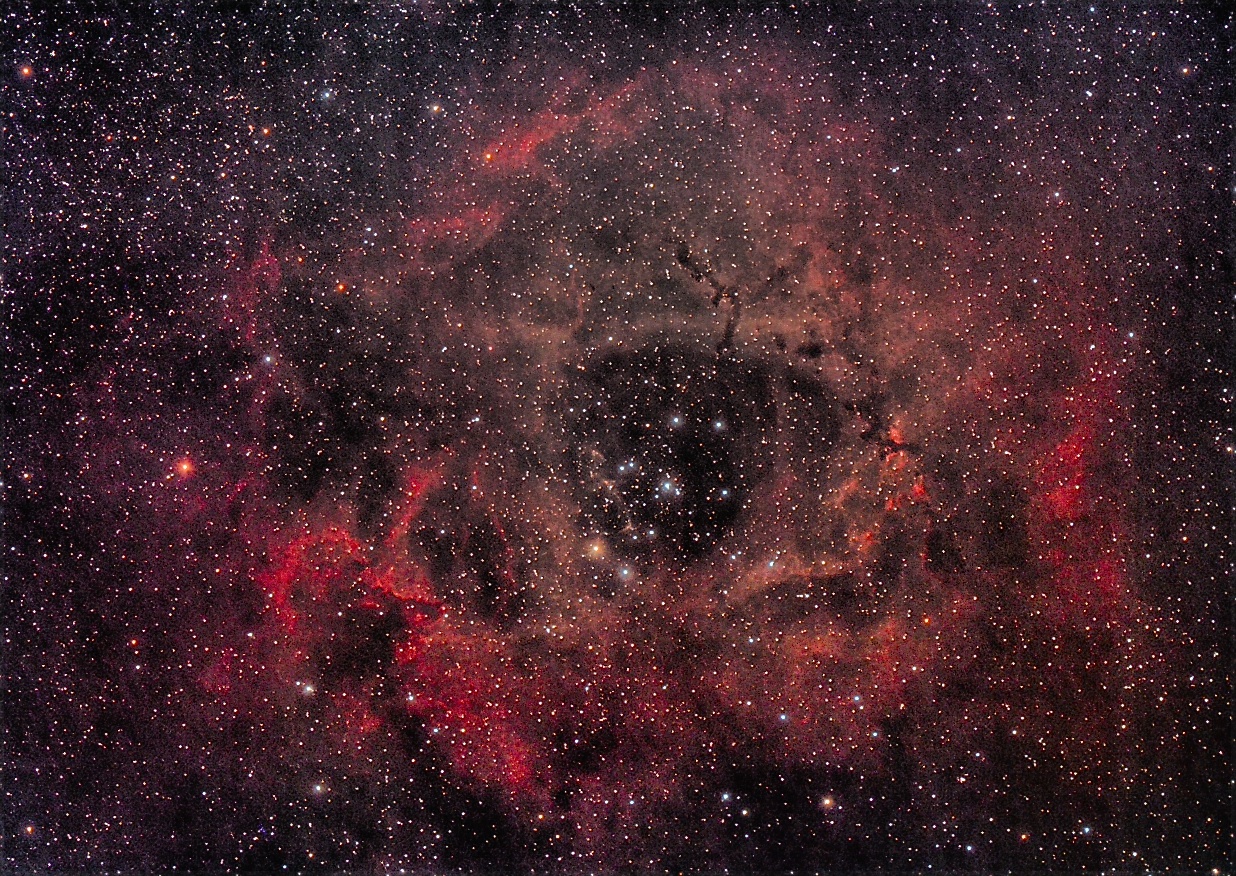The Rosette Nebula is one of the more spectacular nebulae in the night sky. It is a huge cloud of glowing gas heated and ionized by stars created only about five million years ago when a giant molecular cloud collapsed to form a new cluster of stars.
The nebula is known as NGC 2237 while the star cluster at its center is NGC 2244. The nebula more than lives up to its informal nickname, as its circular shape and deep, dark centre gives it a floral appearance.
You will notice that dense pockets and lanes of dust create striking dark silhouettes across the Rosette.
Rosette Nebula (30 min total exposure Apr 20, 2023)

While the central cluster is easily seen in almost any telescope, it requires photography to make out the nebula.
The cluster and nebula lie are about 5,000 light-years from Earth and measure roughly 130 light years in diameter. The radiation from the young stars excites the atoms in the nebula, causing them to emit reddish hydrogen radiation, producing the emission nebula we see. The nebula will disperse in the next few million years, leaving behind only the central cluster.
Some people claim that the Rosette reminds them of a human skull, but I have trouble seeing that! What does your imagination make out?
One of my earliest blog posts three years ago was also a look at the central part of the Rosette. In those days I was discovering what could be seen with relatively short exposures, what is known as EAA (electronically assisted astronomy). More recently I have transitioned into what is properly described as astrophotography, taking longer exposures and developing more skill at processing them. It’s interesting to compare the earlier image with the current one; click here to see it.